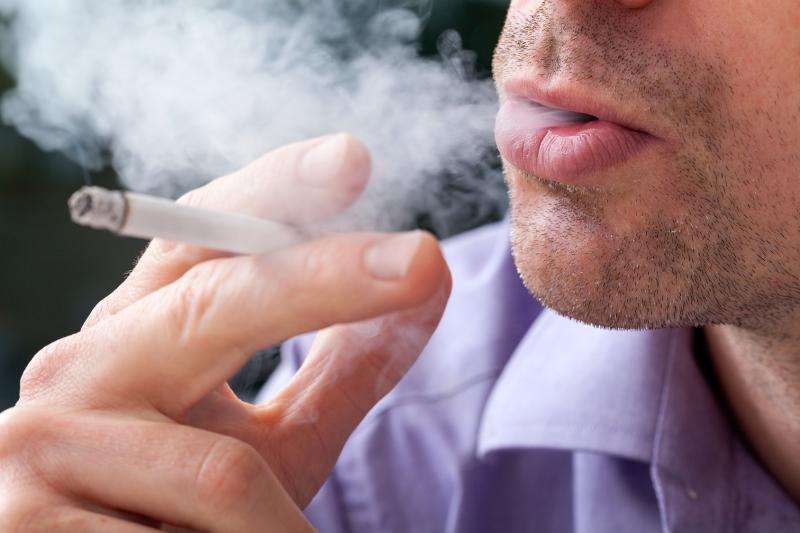
A heavy burden of somatic mutations in human bronchial epithelial cells can be attributed to cigarette smoke and the carcinogens it carries, according to a recent study.
“As expected, exposure to tobacco smoke increases the number of somatic mutations” in normal bronchial cells, the researchers said. There is also “pronounced within-patient variation in mutational burden among smokers: cells from one small biopsy of bronchial epithelium can vary tenfold in their mutational burden, from 1,000 to over 10,000 mutations per cell.”
The researchers obtained bronchial epithelial cell samples from 16 participants: three children, four never-smokers, six ex-smokers and three current smokers. Linear mixed-effects models found that single-base substitutions increased significantly with age (p=10–8), and even more so with previous or current smoking (p=0.0002). [Nature 2020;doi:10.1038/s41586-020-1961-1]
Ageing resulted in 22 base substitutions per cell per year. In comparison, cells of ex-smokers gained a mean of 2,330 (95 percent confidence interval [CI], 1,183–3,480) substitutions per cell, while cells of current smokers bore an average of 5,300 (95 percent CI, 3,660–6,930) substitutions per cell.
The researchers also documented a high degree of variability in the mutational burden, even in samples coming from the same individual. For instance, a small airway biopsy from a given ex-smoker containing closely collocated cells had a standard deviation of 2,350 mutations per cell. Current smokers showed a standard deviation of 2,100 per cell. In comparison, per-cell variation in children and adult never-smokers were 140 and 290, respectively.
Heterogeneity in mutational burden also existed among individuals. The estimated standard deviation for substitution burden per cell in ex-smokers and current smokers were 1,200 and 1,260, respectively, while that in nonsmokers was 90 per cell.
A similar overall pattern was observed for insertions and deletions, which increased consistently and significantly with age (0.7 events per cell per year; p=10–6) and in current (101 extra events per cell) and ex-smokers (51 extra events per cell; p=0.001).
“Among current and ex-smokers, we found that mutational burden was not significantly correlated with the duration of cigarette smoking or the number of cigarettes smoked per day, even if near-normal cells were excluded,” the researcher said. “However, the small numbers of subjects and large within-subject heterogeneity limits our statistical power for this analysis, and definitive analysis will require much larger sample sizes.”
Notably, the researchers also found a link between telomere length and mutational burden. In smokers, particularly in ex-smokers, there was a strong and inverse correlation between telomere length and the number of genetic mutations, suggesting that cells which had near-normal burdens of mutation underwent fewer cell division cycles than their heavily burdened counterparts.
“The message for public health is that stopping smoking—at any age—does not just slow the accumulation of further damage but can also reawaken cells that have not been damaged by past lifestyle choices,” the researchers said.